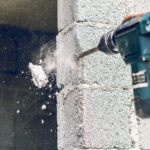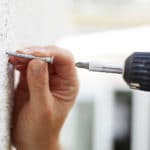A drill is one of the most important tools in any workshop. You can use it for a variety of tasks, but some jobs require more precision than others. For those types of projects, you need to have a sharp drill bit.
Dull drills can cause enough friction that they could actually start to melt the surface of whatever you’re drilling. This is especially true when working with metal or hardwood, so it’s important that your drills are sharpened often if you want them to last for very long and still be effective.
This blog post will teach you how to keep your bits razor-sharp so they’ll glide through wood and metal like butter.
What Is A Drill Bit And What Does It Do?
A drill’s main function is to bore into materials. Drill bits come in any shape imaginable, from round to flathead, but they’re all designed for the same basic purpose: piercing different surfaces by creating an opening that can be used as a starting point for other tasks.
It’s important to have a drill bit that’s made for the job at hand!
How Do You Know When Your Drill Bits Need Sharpening?
There are many ways to tell if a drill is in need of attention. The most obvious sign might be difficulty with drilling into materials like wood, metal, or even glass.
Sharpen drills when they start to become difficult or slow in cutting through materials.
These surfaces should slide easily through the bit, and it should feel like you’re drilling into a sponge. You might also see brown splatters or notice that bits are wearing down more quickly than they used to.
How Do I Sharpen My Drill Bits?
There are three main types of drills: hand-held grinders, bench grinders, and electric drills with an attached grinder wheel on top which can be changed out for different-sized wheels as needed. It’s important to use the right type of grinder for the job, or else your drill bits will be ruined.
There are many types and shapes of drills to choose from, but they’re all made differently so it’s important to match up the right bit with its corresponding type of grinder.
You’ll want to find the right size wheel for your drill bit in order to get it sharpened quickly and without any mistakes.
A bench grinder can be used for more complex drill bit sharpening, but electric and hand-held grinders are good for simple tasks like shaping flathead bits into round ones.
Be sure to only sharpen the edges of your drill bit, not the flat top or bottom surfaces. This will help keep them from wearing out too quickly and also helps you avoid accidents while working with small pieces that could become caught in a sharp shard if you didn’t grind it down properly beforehand.
Tips For Using A Bench Grinder
Bench grinders are perfect if you need to sharpen drill bits that have worn down too much to be fixed at home.
There are still some important safety considerations when using a bench grinder:
- Make sure the wheel is not touching anything but your drill bits, and make sure you’re wearing protective gear like goggles and gloves.
- Be careful of any sparks from metal grinding on metal; they can fly into your eyes!
- Be mindful of the surface you’re using to sharpen on; make sure it’s sturdy and won’t get damaged.
Tips For Choosing A Wheel Size
A bench grinder can have wheels that are anywhere from 40mm to 100mm, but there really is no “best” choice. You’ll want to choose a wheel that’s durable, but not so large it slows down the grinder.
Final Thoughts
Sharp drill bits are important for any DIYer! Whether you’re drilling into wood or metal, having sharp drills will make your life much easier and get you better results in less time.
Sharpening is easy on hand-held and electric grinders, but if you find yourself needing more precision than that then a bench grinder is the perfect tool for the job.




